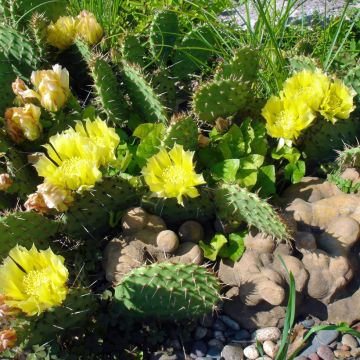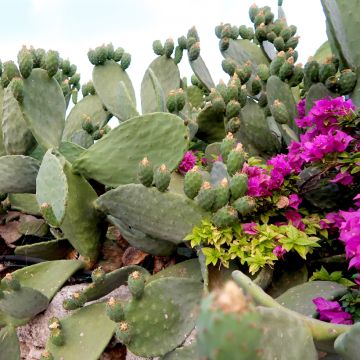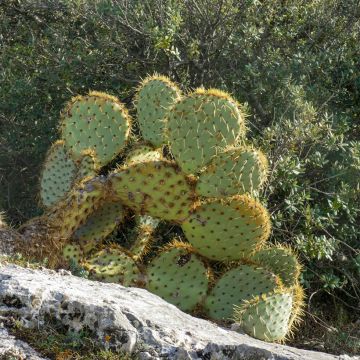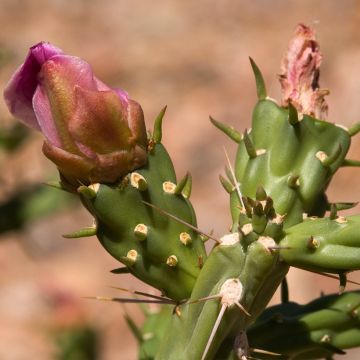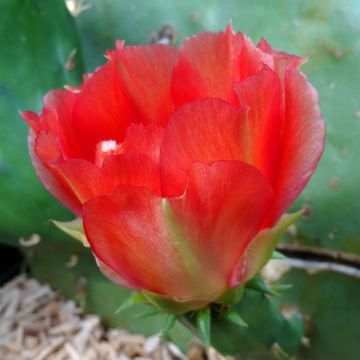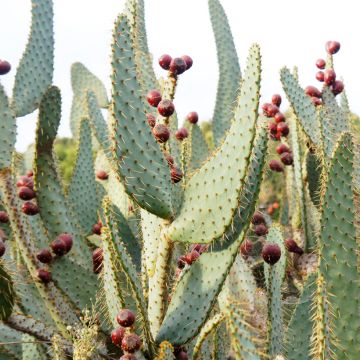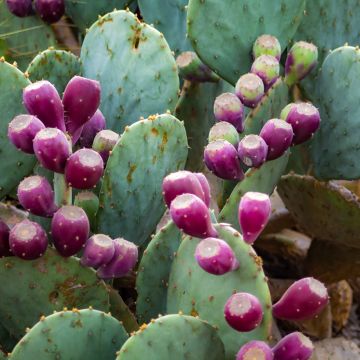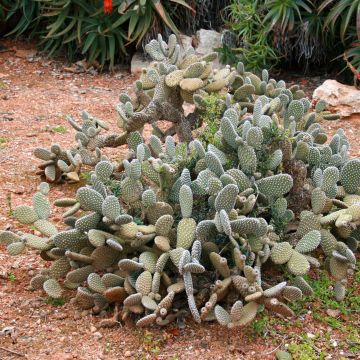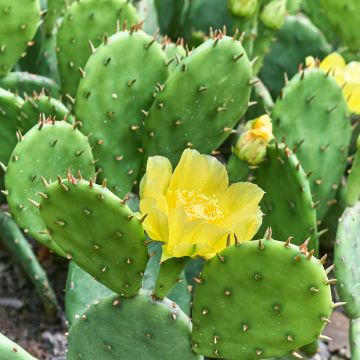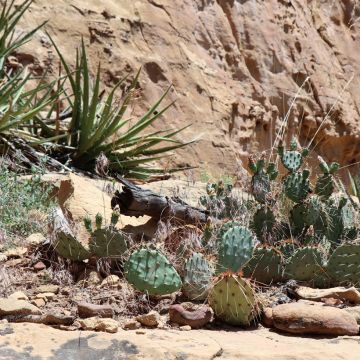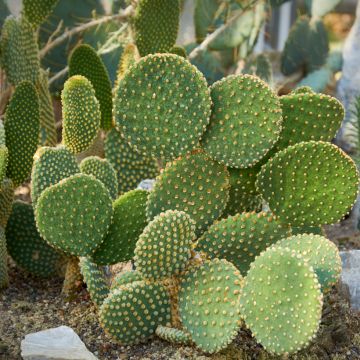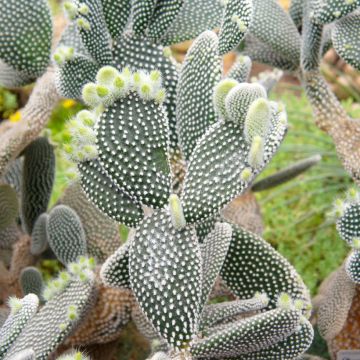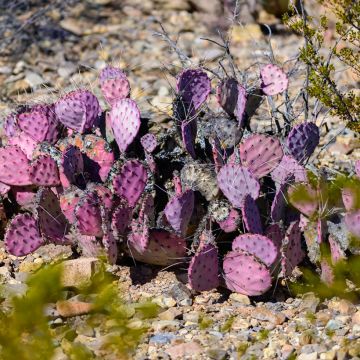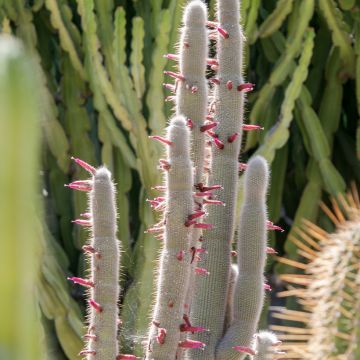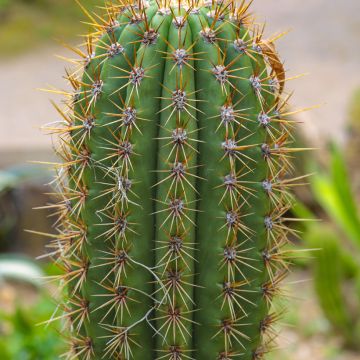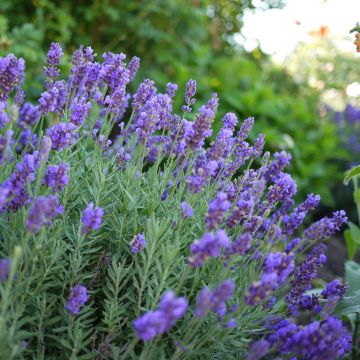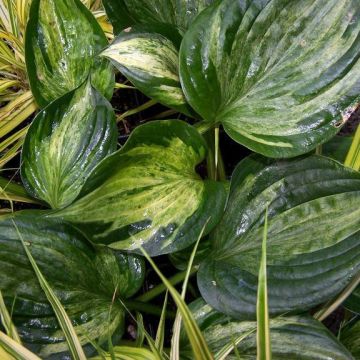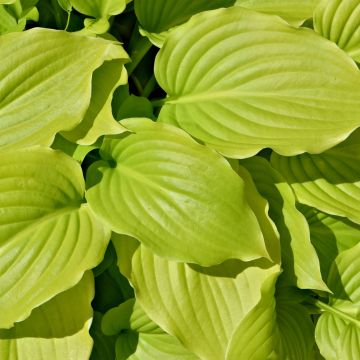

Opuntia sanguinicola - Prickly Pear
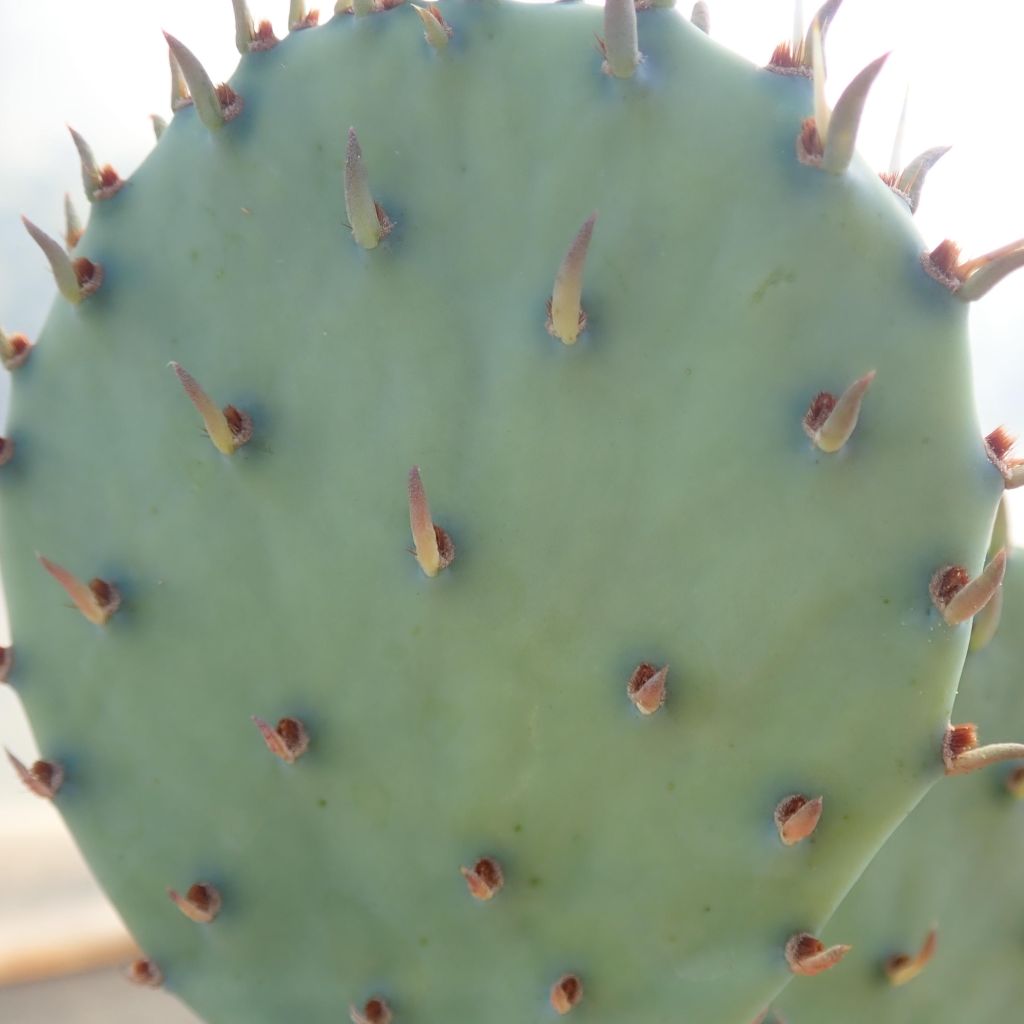

Opuntia sanguinicola - Prickly Pear
Opuntia sanguinicola - Prickly Pear
Opuntia sanguinicola
Opuntia, Prickly Pear
Special offer!
Receive a €20 voucher for any order over €90 (excluding delivery costs, credit notes, and plastic-free options)!
1- Add your favorite plants to your cart.
2- Once you have reached €90, confirm your order (you can even choose the delivery date!).
3- As soon as your order is shipped, you will receive an email containing your voucher code, valid for 3 months (90 days).
Your voucher is unique and can only be used once, for any order with a minimum value of €20, excluding delivery costs.
Can be combined with other current offers, non-divisible and non-refundable.
Why not try an alternative variety in stock?
View all →This plant carries a 12 months recovery warranty
More information
We guarantee the quality of our plants for a full growing cycle, and will replace at our expense any plant that fails to recover under normal climatic and planting conditions.
Would this plant suit my garden?
Set up your Plantfit profile →
Description
The Opuntia sanguinicola is one of the few varieties of prickly pear that can be easily grown in a regular, non-rocky, well-drained, even limestone soil. This resistant and hardy plant forms a bush with a tentacle-like appearance, wider than it is tall, composed of slightly spiny, wide and rounded "paddles" adorned with numerous small tufts of cinnamon-colored hairs, which are decorative. It is also interesting for its brilliant flowering, with its delightful yellow-orange flowers adding an exotic touch to arid areas and dry gardens. Hardy prickly pears are cultivated outdoors, in open ground and away from high traffic areas. These 'cacti' can thus express the spirit that inhabits them, that of the desert landscapes of North America.
The Opuntia sanguinicola, a close relative of the Prickly Pear (Opuntia ficus indica), a succulent plant without true leaves from the cactus family. This botanical species is native to Texas, where it is found primarily in flatlands, in deep, calcareous soils. An adult specimen will reach about 40 cm (16in) in height and spread laterally up to 1 m (3ft). Its growth is moderately fast, with the plant producing 1 or 2 new paddles per year from spring to autumn. The vegetation consists of paddles or cladodes that are stacked on top of each other, flattened, fleshy, round to oval in shape, sometimes heart-shaped, and can measure up to 20 cm (8in) in length. They are bluish-green in color, sometimes tinged with pinkish-purple, and become wrinkled in cold weather. The surface is covered with tiny but formidable prickle-like structures called glochids, gathered in small round tufts, which are very dangerous when handling. Some larger prickles are present, mainly on the periphery of the cladodes. Flowering occurs from May-June to July, varying slightly depending on the region. Several large flowers appear around the edges of the paddles, mainly towards their tips. Resembling rounded cups about 6 to 7 cm (2 to 3in) wide, they are composed of fine, slightly translucent petals. They give way to globose fruits, heavily covered in glochids, which turn bright red when ripe. While they are edible, they are less flavorful than those of the Prickly Pear.
Cultivable in almost all regions, this amazing cactus is hardy down to -20°C without protection, but requires well-drained soil. It naturally enhances exotic or contemporary designs, in rock gardens, on slopes, or at the edges of a dry garden, it can also be used to reinforce a defensive hedge. It will find its place among hardy agaves, Nolinas, and arborescent Euphorbias. Pair it with relatively hardy columnar cacti such as Cleistocactus strausii or Cylindropuntia imbricata. It should be kept away from walkways and children due to its formidable spines.
Report an error about the product description
Opuntia sanguinicola - Prickly Pear in pictures
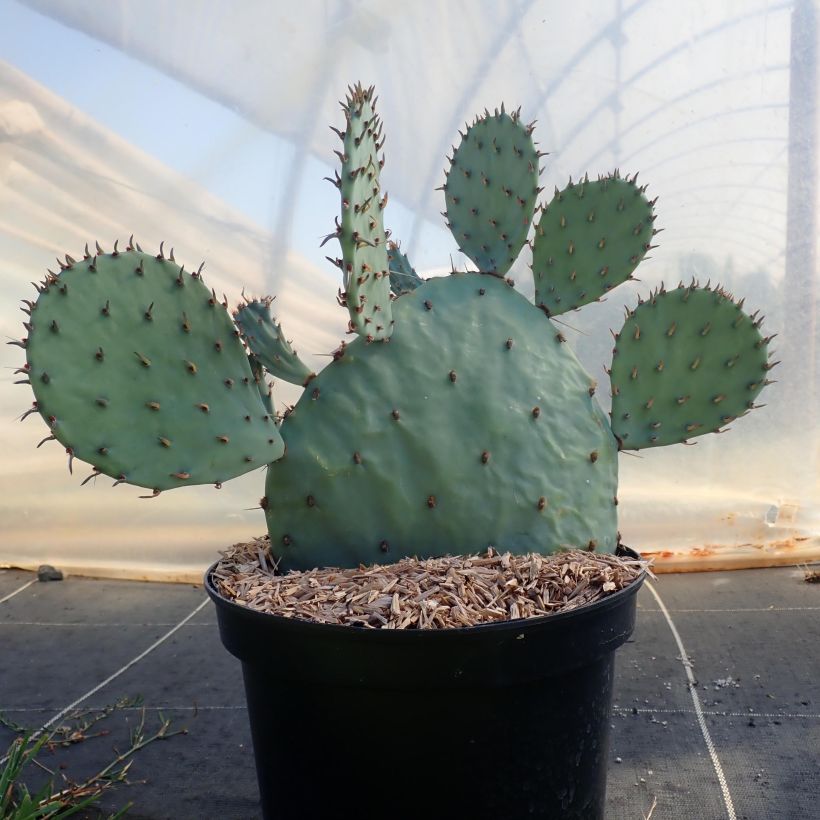

Flowering
Foliage
Plant habit
Botanical data
Opuntia
sanguinicola
Cactaceae
Opuntia, Prickly Pear
North America
Other Opuntia
View all →Planting and care
Plant Opuntia sanguinicola in spring or early autumn, in full sun, or even in partial shade in hot and dry climates, in a preferably poor, even limestone or sandy, but well-drained soil. it tolerates winter humidity combined with cold in a porous soil that does not retain too much water in winter. The plant prefers deep (non-rocky) soils, and is resistant to summer drought. This prickly pear can withstand intense frost, up to about -20°C (1°F). Its segments collapse and wrinkle in winter, due to the cold, but 'reinflate' in spring. It is not known to be susceptible to any pests except for scale insects.
Cultivation substrate: 3/4 potting soil + 1/4 garden soil + organic fertilizer for potted plants. Sandy, very rocky soil, low in clay for outdoor cultivation.
Propagation by cutting the pads is easy: take a segment at a junction, place it on a cactus soil substrate for a few days, until a healing callus forms. Then, plant the base of the cutting a little deeper into the soil and water regularly. The plant will not flower or fruit before the age of 3.
Handle your cacti with gloves and protective goggles.
Planting period
Intended location
Care
This item has not been reviewed yet - be the first to leave a review about it.
Similar products
Haven't found what you were looking for?
Hardiness is the lowest winter temperature a plant can endure without suffering serious damage or even dying. However, hardiness is affected by location (a sheltered area, such as a patio), protection (winter cover) and soil type (hardiness is improved by well-drained soil).

Photo Sharing Terms & Conditions
In order to encourage gardeners to interact and share their experiences, Promesse de fleurs offers various media enabling content to be uploaded onto its Site - in particular via the ‘Photo sharing’ module.
The User agrees to refrain from:
- Posting any content that is illegal, prejudicial, insulting, racist, inciteful to hatred, revisionist, contrary to public decency, that infringes on privacy or on the privacy rights of third parties, in particular the publicity rights of persons and goods, intellectual property rights, or the right to privacy.
- Submitting content on behalf of a third party;
- Impersonate the identity of a third party and/or publish any personal information about a third party;
In general, the User undertakes to refrain from any unethical behaviour.
All Content (in particular text, comments, files, images, photos, videos, creative works, etc.), which may be subject to property or intellectual property rights, image or other private rights, shall remain the property of the User, subject to the limited rights granted by the terms of the licence granted by Promesse de fleurs as stated below. Users are at liberty to publish or not to publish such Content on the Site, notably via the ‘Photo Sharing’ facility, and accept that this Content shall be made public and freely accessible, notably on the Internet.
Users further acknowledge, undertake to have ,and guarantee that they hold all necessary rights and permissions to publish such material on the Site, in particular with regard to the legislation in force pertaining to any privacy, property, intellectual property, image, or contractual rights, or rights of any other nature. By publishing such Content on the Site, Users acknowledge accepting full liability as publishers of the Content within the meaning of the law, and grant Promesse de fleurs, free of charge, an inclusive, worldwide licence for the said Content for the entire duration of its publication, including all reproduction, representation, up/downloading, displaying, performing, transmission, and storage rights.
Users also grant permission for their name to be linked to the Content and accept that this link may not always be made available.
By engaging in posting material, Users consent to their Content becoming automatically accessible on the Internet, in particular on other sites and/or blogs and/or web pages of the Promesse de fleurs site, including in particular social pages and the Promesse de fleurs catalogue.
Users may secure the removal of entrusted content free of charge by issuing a simple request via our contact form.
The flowering period indicated on our website applies to countries and regions located in USDA zone 8 (France, the United Kingdom, Ireland, the Netherlands, etc.)
It will vary according to where you live:
- In zones 9 to 10 (Italy, Spain, Greece, etc.), flowering will occur about 2 to 4 weeks earlier.
- In zones 6 to 7 (Germany, Poland, Slovenia, and lower mountainous regions), flowering will be delayed by 2 to 3 weeks.
- In zone 5 (Central Europe, Scandinavia), blooming will be delayed by 3 to 5 weeks.
In temperate climates, pruning of spring-flowering shrubs (forsythia, spireas, etc.) should be done just after flowering.
Pruning of summer-flowering shrubs (Indian Lilac, Perovskia, etc.) can be done in winter or spring.
In cold regions as well as with frost-sensitive plants, avoid pruning too early when severe frosts may still occur.
The planting period indicated on our website applies to countries and regions located in USDA zone 8 (France, United Kingdom, Ireland, Netherlands).
It will vary according to where you live:
- In Mediterranean zones (Marseille, Madrid, Milan, etc.), autumn and winter are the best planting periods.
- In continental zones (Strasbourg, Munich, Vienna, etc.), delay planting by 2 to 3 weeks in spring and bring it forward by 2 to 4 weeks in autumn.
- In mountainous regions (the Alps, Pyrenees, Carpathians, etc.), it is best to plant in late spring (May-June) or late summer (August-September).
The harvesting period indicated on our website applies to countries and regions in USDA zone 8 (France, England, Ireland, the Netherlands).
In colder areas (Scandinavia, Poland, Austria...) fruit and vegetable harvests are likely to be delayed by 3-4 weeks.
In warmer areas (Italy, Spain, Greece, etc.), harvesting will probably take place earlier, depending on weather conditions.
The sowing periods indicated on our website apply to countries and regions within USDA Zone 8 (France, UK, Ireland, Netherlands).
In colder areas (Scandinavia, Poland, Austria...), delay any outdoor sowing by 3-4 weeks, or sow under glass.
In warmer climes (Italy, Spain, Greece, etc.), bring outdoor sowing forward by a few weeks.






























